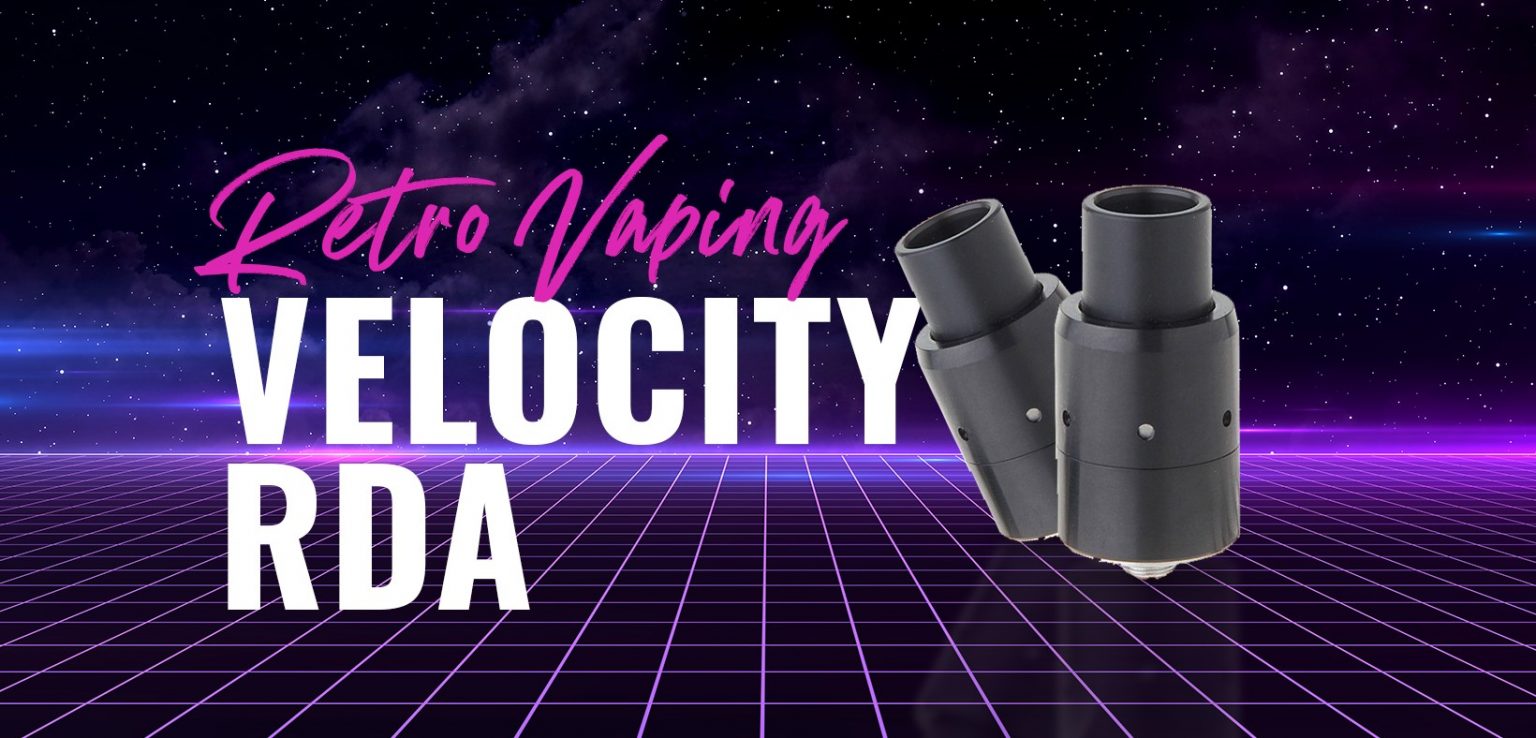With how quickly new products are released, it’s easy to forget about those devices that set the blueprint for modern vaping. In this series of blog posts, we’re going to take a look at older vaping hardware and see if it was deserving of the praise it received.
We’re starting with the Velocity RDA. Released in 2015, it’s arguably one of the most well-loved atomisers of all time and there’s no doubt it had a huge influence on atomiser design going forward, with the “Velocity style” deck becoming a staple in other products for years.
The Velocity was a perfect storm of form and function. It has a unique, clean aesthetic, coupled with a simple build deck and a highly configurable airflow design.
The first thing that might seem antiquated to new vapers is the size of this RDA. It’s a 22mm dual coil device, a format that has all but died out in today’s market. By default, it’s equipped with a massive threaded drip tip that’s almost as large as the RDA itself, with a huge internal bore. Thankfully, a 510 adapter is also included, for those who want a more sensible drip tip.
The deck has become iconic and was repurposed for countless RDA and RTA designs from 2015 onwards. This component shows its age too, with side mounting screws that don’t get along with complex coils, such as Aliens. Considering the small diameter, though, this does not pose much of a problem, since two low gauge round wire coils will fill the chamber nicely.
The top cap, which houses the airflow control, was never emulated to the same extent as the deck and I can partially see why. The upper section of the barrel is threaded into the lower portion and adjusting this up or down adjusts two massive cyclops slots, along with an array of 2mm holes towards the top of the RDA.
The Cyclops slots are designed to feed air directly to your coils, while the holes were intended to be used as indirect airlow. Indirect airflow was quite common in 2015, as vapers were starting to experiment with extremely hot builds that were difficult to cool. In my view, this is the one feature of the Velocity that is totally obsolete. The cyclops inlets provide more than enough air for any reasonable build. If more airflow is required, it’s likely because the build is simply too hot for a 22mm dual coil RDA.
With this information in mind, I dusted off my old Velocity and rebuilt it for the first time in years. I opted for a 2.5mm, 6 wrap, 24g kanthal dual coil build, which came out to 0.25Ohms. Coil installation and wicking was just as easy as I remember.
After tinkering with the airflow control and wattage setting on my mod, I found a sweet spot at 60W. with the main airflow closed half way and the indirect airflow closed off completely. I was pretty surprised by the resulting vape. Warm, very flavourful and only slightly turbulent.
It doesn’t quite match up to the flavour of the dual coil builds I usually vape these days but then again, this round wire build in the velocity doesn’t need as much power or consume as much e-liquid. To be honest, I’m shocked at just how well this atomiser holds up. With the airflow opened more, flavour quickly diminishes and significant turbulence creeps in, though this is to be expected.
It got me thinking – why did we abandon 22mm dual coil RDAs? Of course, they will never be able to handle exotic coils, but that’s not the point. I’d be very interested to see a modern take on a 22mm dual coiler, with honeycomb airflow and a low profile design. If I had to guess, it would likely produce fantastic flavour with simple round wire builds.
In summary, I’m glad I revisited this RDA. The combination of nostalgia for a simpler time in vaping and legitimately good performance made for a pleasant experience. Maybe it’s time we all started to revisit our older gear.









